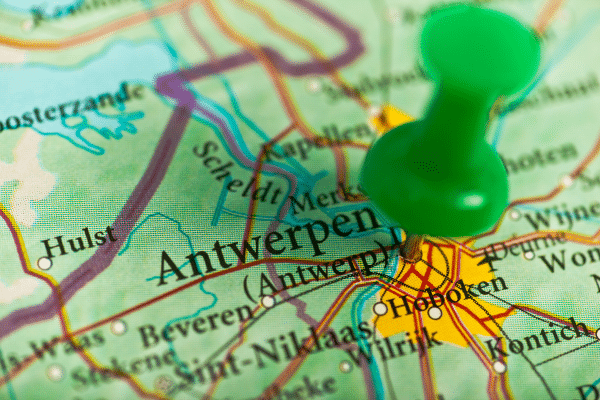Antwerp is a vibrant city with many assets, but also many challenges. One of the biggest bottlenecks is mobility. The Antwerp ring road has been overloaded for years, resulting in traffic jams, accidents and air pollution. That is why the Flemish government is working on an ambitious project to close and improve the ring: the Oosterweel Link.

The Oosterweel Link has been proposed in different forms as far back as 1996. The main goal has always been to construct a new road between the left and right banks of the Scheldt. Consequently, closing the Antwerp Ring Road. The road will largely consist of tunnels, under the Scheldt but also under parts of the city and the Albert Canal. On the right bank, the tunnel complex will connect to the current ring road at the Sports Palace.
Besides making a previously non-existent connection for the ring road, the project has several other objectives.
The Oosterweel Link will have a major impact on the view and experience of Antwerp. The city will be more connected to its surroundings, to its port and to its river. As a result, the ring road will no longer form a barrier. In fact, it will form a link between neighbourhoods and city districts. Antwerp residents will be able to enjoy more peace, space and oxygen in their city.
Some examples of how Antwerp will change after the Oosterweel Link are:
The Oosterweel Link is a complex and large-scale project that is being carried out in several phases. The first construction started in 2018 on the Left Bank and in Zwijndrecht. It has been announced that work has now started on the bypass off ring road R1, a new bicycle bridge for the Ijzerlaan, the canal tunnels, the renovation of the existing Park and Rides, and the new Oosterweel Junction. The entire Oosterweel Link is expected to be ready in 2030.
If you want to know more about the Oosterweel Link, you can visit the website. There you will find the latest news, the current state of affairs, the planned works, the expected nuisance, the future images and much more.
The Oosterweel Link is a project by Lantis, a developer of complex mobility projects in the Antwerp region. Lantis collaborates with various partners, such as the Flemish government, the city of Antwerp, the port of Antwerp, citizen movements and contractors. Together they are building a city and region where it is good to live, work, do business and visit.
Veuillez saisir votre nom d'utilisateur ou votre adresse électronique. Vous recevrez un lien pour créer un nouveau mot de passe par e-mail.